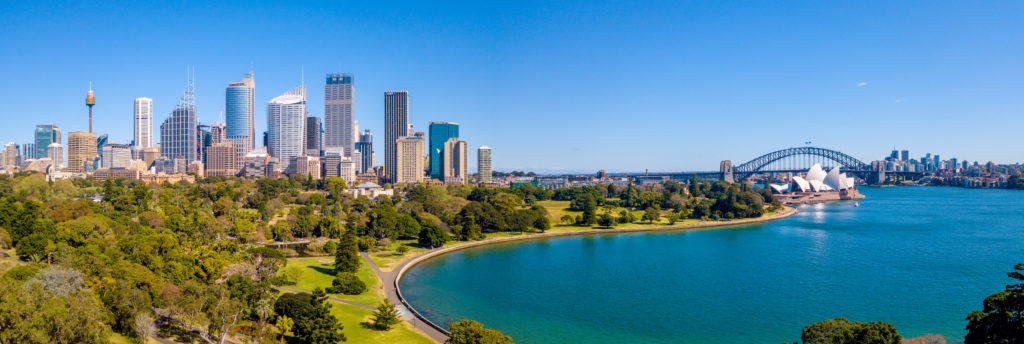A History of the Wine Industry in Australia
- On : August 14, 2020
- By : Entegra Signature Structures
Wine production in Australia has had significant attention from the time the very first vines in the country were planted on the site of Sydney’s Royal Botanic Gardens, in 1788. Waves of immigration to Australia has changed and better adapted processes that were first invented around 8000BC.
Since then, the history of the Australian wine industry has had its highs and lows, before becoming the respected producer and exporter it is today. Starting at the beginning, let’s take a closer look at the history of wine in Australia and the people who helped to shape it.
The Sydney Botanic Gardens
Captain Arthur Phillip and the First Fleet first brought vines to Australia in 1788. The planting of these vines, on the Royal Botanic Gardens site, was not successful due to the soil.
Three years later, in January 1791, grapes were cut from vines in the Governor’s garden which was situated where Sydney’s Macquarie Street now stands. The vines had been brought to Australia from the Cape of Good Hope and were the first to be successfully cultivated in the country.
John Macarthur set up the first commercial vineyard in the country soon after. The vineyard was located in Sydney’s coastal area. It was the first of many vineyards to be created in the area. From an export market point of view, wine was first shipped to London in 1822, by Gregory Blaxland.
RECOMMENDED ARTICLE
Grape byproducts open new markets – Entegra Signature Structures
Growth of the wine industry in the 19th century
By the late 19th century, vineyards were established in areas that are familiar names in the wine industry today; famous wine regions like the Hunter Valley, Barossa Valley and Yarra Valley.
At the time, and until the 1950s, most of the wine production in Australia involved fortified wines. In 1950, 86% of grapes in Australia were used in this way. The additional alcohol in these wines protected them from microbiological attack and made them easier to store. However, production was about to move away from fortified wines and towards table wines.
The European influence on Australian wine in the 1960s
During the 1960s, German and Italian immigrants arrived in Australia. They helped to expand and change the wine industry. It was at this time that the focus of the industry changed to producing sweet and sparkling wines and then to producing full-bodied reds as well. By the time the 1970s came to an end, the focus was on dry whites and Chardonnay was popular.
Another important development at this time was the invention of the wine cask, or “bag in a box” by Tom Angove of Angove’s in Renmark, South Australia. This increased the popularity of wine as people were able to drink small amounts at a time more easily.
During this period, there were several influential figures in the Australian wine industry including Max Lake who started the first boutique winery, Dr Bailey Carrodus who produced the first commercial vintage in the Yarra for decades and newspaper wine columnist Len Evans.
Expanding into the European market in the 1980s
The 1980s was an exciting period for the Australian wine industry. It was late in this decade when Australian wines became popular in Europe. The emphasis was on fruity white wines and also robust red varieties.
You only need to look at the figures for this period, to see how influential it was in the history of Australian wine. Early in the 1880s, Australia was 18th in the list of world wine exporters. By the time the early 1990s had arrived, the country was 6th on the list.
During this and the following wine production periods, new boutique winemakers became industry pioneers including Louisa Rose (Yalumba), Jeffrey Grosset (Grosset in the Clare Valley) and Tim Kirk (Clonakilla, Canberra District).
The new age of Australian wine
As the mid-noughties approached, Australian wines became less popular and further evolution of the industry was needed.
This has happened, with the move towards more sensitive and natural farming methods. The boutique vineyards of today have put Australia firmly back in a strong position in the global wine industry. This new wave of Australian wines is now helping to shape the industry in a country which is home to more than 2,000 wineries in 60 different regions.
The future looks bright for Australian wine production. Although export volumes have fallen, revenues are at record levels. This is because the biggest price segment for the industry is in quality wines, $10 per litre and above. The biggest markets for these exports are China, the US, the UK, Canada, and Singapore.
Wine production in Australia seems to be at a good point but only time will tell how the wine industry history in Australia will continue into the future.
https://wineguideaustralia.com/australian-wine-history/
https://www.streetdirectory.com/food_editorials/beverages/wine/history_of_wine_in_australia.html
https://www.thedrinksbusiness.com/2020/02/australian-wine-exports-grow-by-3-to-2-91bn/



